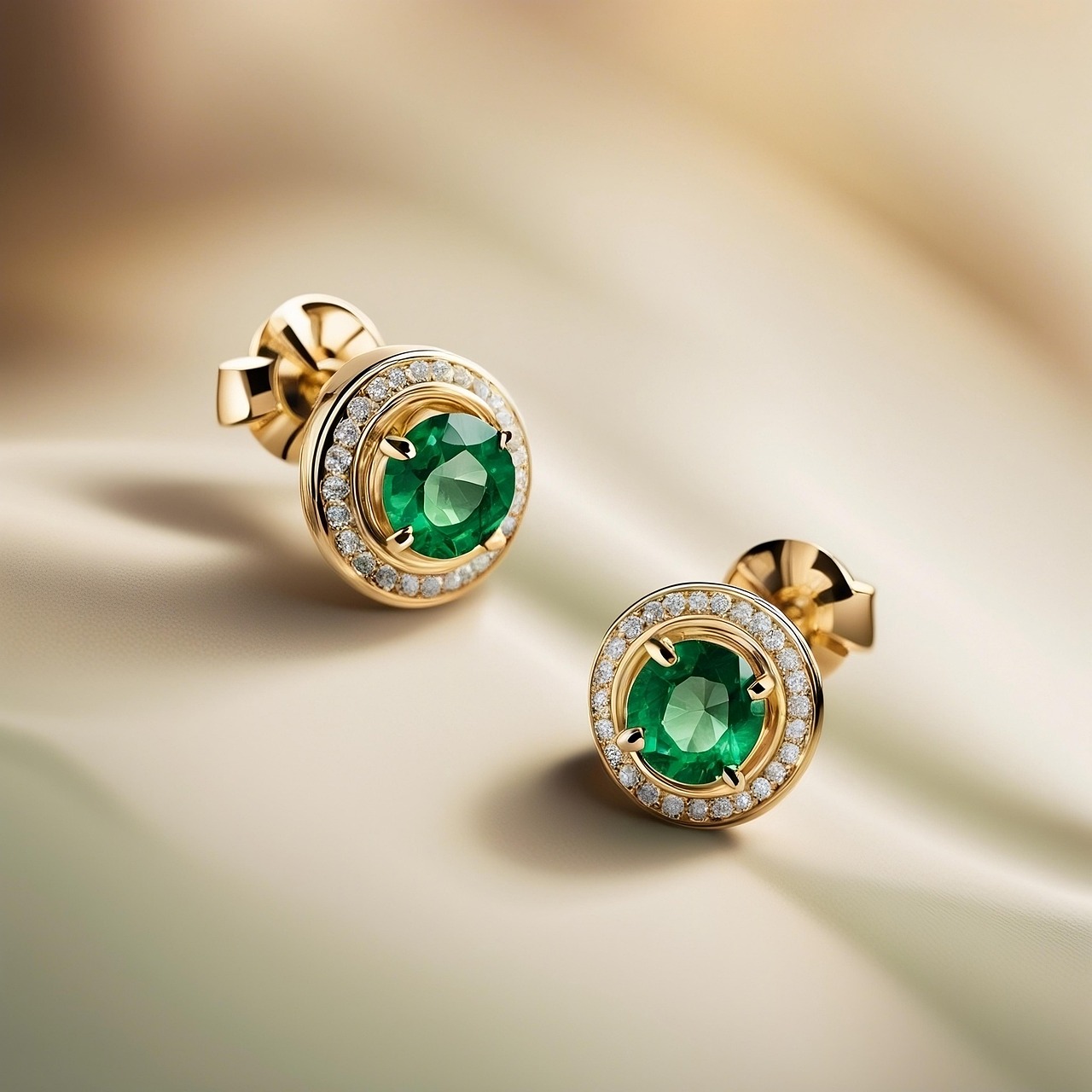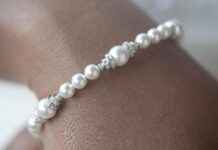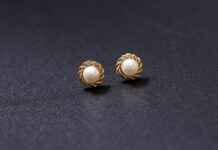This comprehensive guide explores the essential aspects of purchasing jewelry online, from understanding materials to ensuring secure transactions, providing readers with the knowledge needed for a satisfying shopping experience.
Why Buy Jewelry Online?
- Convenience: Shop from the comfort of your home.
- Wider Selection: Access to unique pieces from around the globe.
- Better Prices: Often lower prices than physical stores due to reduced overhead costs.
Understanding Different Jewelry Materials
When purchasing jewelry, knowledge of materials is crucial. Here are some of the most common:
- Gold: Available in various karats and colors.
- Silver: Sterling silver is the most popular form.
- Gemstones: Each has unique properties and meanings.
Choosing the Right Gemstones
Selecting the right gemstones enhances the quality of your jewelry. Consider:
- Natural vs. Synthetic: Know the differences in authenticity and value.
- Birthstones: Each month has a stone with special significance.
How to Ensure Quality When Buying Online
To ensure quality, follow these tips:
- Read Product Descriptions: Look for detailed information.
- Check Reviews: Customer feedback can provide valuable insights.
Understanding Pricing and Budgeting
Setting a budget is essential. Here’s how to manage your spending:
- Compare Prices: Use multiple platforms to find the best deal.
- Watch for Hidden Costs: Be aware of shipping and taxes.
Finalizing Your Purchase: Safety Tips
Ensure a secure transaction by:
- Using Secure Payment Methods: Opt for trusted payment options.
- Verifying Seller Reputation: Research sellers before making a purchase.
By following this guide, you can navigate the online jewelry market with confidence, ensuring a satisfying and secure shopping experience.
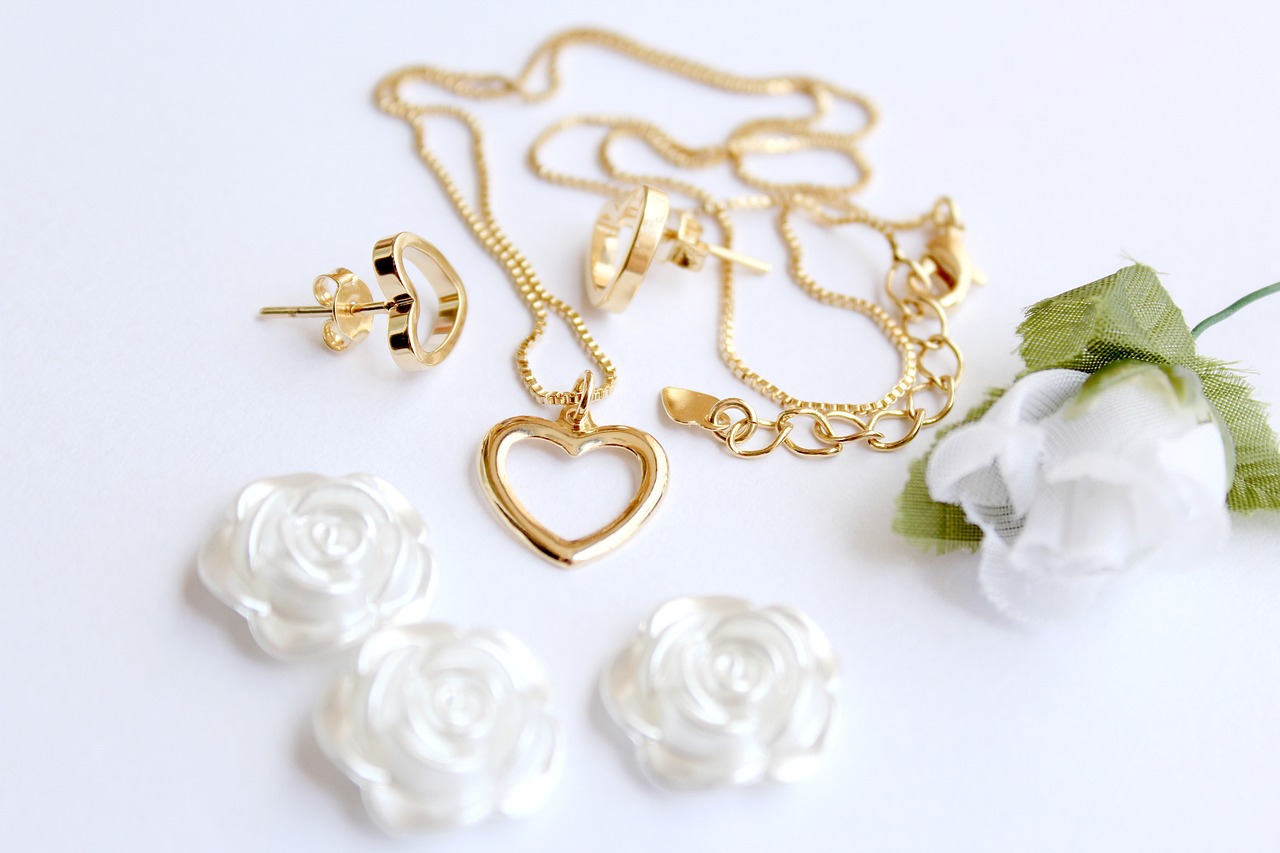
Why Buy Jewelry Online?
In today’s digital age, buying jewelry online has become an increasingly popular choice for many consumers. The reasons for this shift are multifaceted, offering a plethora of advantages that traditional brick-and-mortar stores often cannot match.
- Convenience: One of the primary benefits of online shopping is the convenience it provides. You can browse through countless options from the comfort of your home, eliminating the need to travel to various stores. This is especially beneficial for those with busy schedules.
- Wider Selection: Online platforms often have a much larger inventory than physical stores. This means you can find unique pieces that may not be available locally. From vintage items to contemporary designs, the online market caters to diverse tastes.
- Better Prices: Online retailers frequently offer competitive pricing due to lower overhead costs. Additionally, you can easily compare prices across different websites to ensure you’re getting the best deal.
- Access to Reviews: Shopping online allows you to read customer reviews and ratings. This feedback can provide valuable insights into the quality and authenticity of the jewelry you’re considering.
- Custom Options: Many online jewelers offer customization options that allow you to create a piece that perfectly suits your style and preferences. This level of personalization can be harder to achieve in physical stores.
Furthermore, the transformation of the jewelry market due to online shopping cannot be overstated. Traditional retailers are adapting to the digital landscape, often enhancing their online presence to reach a broader audience. This shift has encouraged innovation and improved customer service, making the jewelry shopping experience more enjoyable.
In conclusion, the advantages of buying jewelry online—ranging from convenience and selection to pricing and customization—make it a compelling option for consumers. As the market continues to evolve, shoppers can expect even more exciting developments in the world of online jewelry shopping.
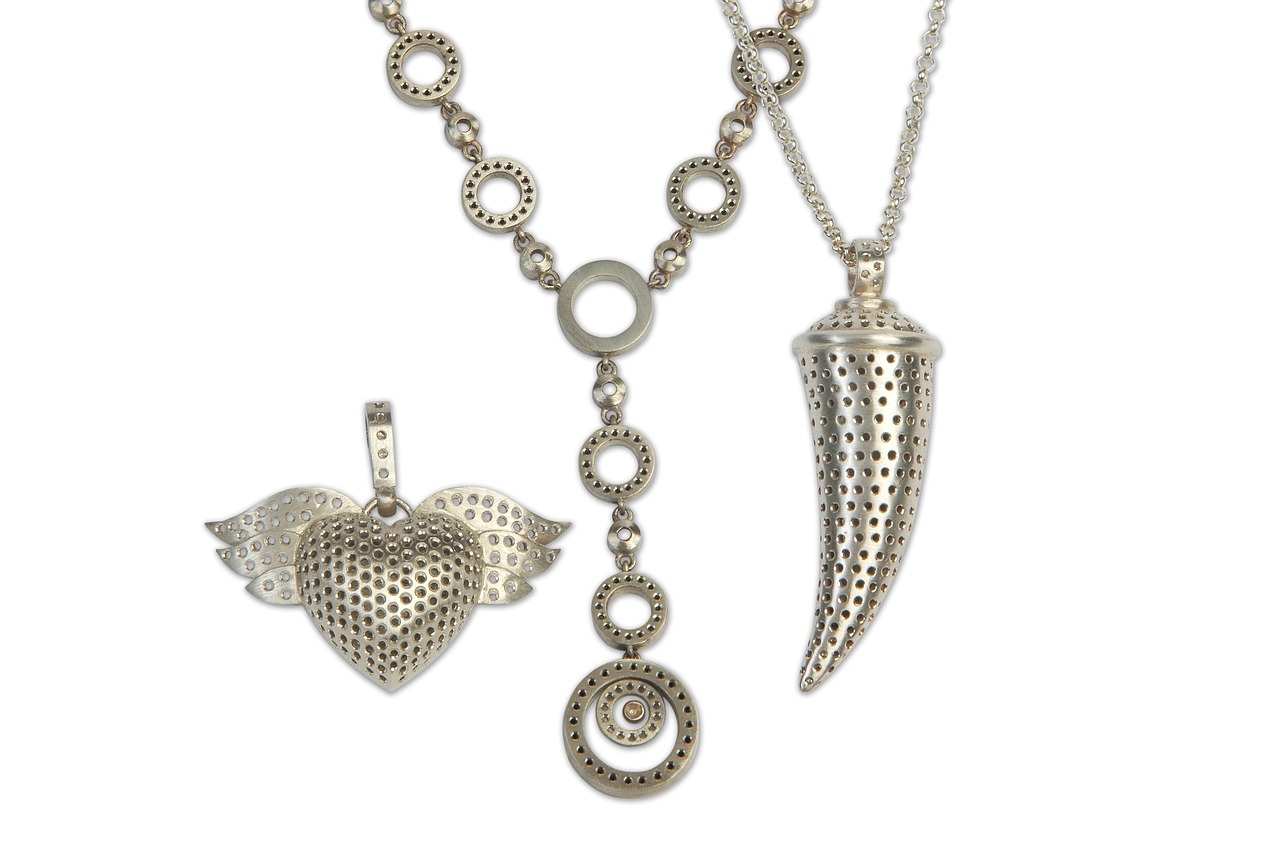
Understanding Different Jewelry Materials
When it comes to purchasing jewelry, having a solid understanding of the materials used is essential. This knowledge not only helps you make informed decisions but also ensures that you choose pieces that suit your style and budget. In this section, we will explore the most common materials found in jewelry, including gold, silver, and gemstones, along with their unique characteristics.
- Gold: Gold is a timeless choice for jewelry. It is available in various purities, measured in karats (K). The most common are 10K, 14K, 18K, and 24K. While 24K gold is the purest, it is also the softest and more prone to scratching. Additionally, gold comes in different colors, including yellow, white, and rose, each offering a distinct aesthetic.
- Silver: The most popular type of silver used in jewelry is sterling silver, which consists of 92.5% silver and 7.5% other metals, usually copper. This combination enhances durability and resistance to tarnishing. Other types of silver include fine silver (99.9% pure) and Argentium silver, which contains a bit of germanium for added tarnish resistance.
- Gemstones: Gemstones add color and personality to jewelry. They can be classified into two categories: natural and synthesized. Natural gemstones are formed through geological processes over millions of years, while synthetic gemstones are created in laboratories. Understanding the differences in authenticity and value is crucial when selecting gemstones.
In addition to these materials, it is important to consider other factors such as care and maintenance. Each material has specific cleaning and storage requirements to maintain its beauty over time. By understanding these materials and their characteristics, you can make choices that not only enhance your style but also ensure the longevity of your jewelry.
Gold Jewelry: Types and Purity
Gold jewelry is a timeless choice that has captivated people for centuries. It comes in various forms and purities, making it essential for buyers to understand the different types available before making a purchase. In this section, we will delve into the important aspects of gold jewelry, including karats, color variations, and tips for selecting the right gold for your personal style and needs.
Gold purity is measured in karats (K), with 24K gold being the purest form, containing 99.9% gold. However, pure gold is quite soft and not ideal for everyday wear. This is why most jewelry is made from lower karat gold, such as:
- 18K Gold: 75% gold, known for its balance of durability and rich color.
- 14K Gold: 58.3% gold, popular for its strength and affordability.
- 10K Gold: 41.7% gold, the minimum karat allowed in the U.S. to be labeled as gold.
In addition to karats, gold jewelry is available in various color variations, including:
- Yellow Gold: The classic gold color, often associated with traditional jewelry.
- White Gold: An alloy of gold and other metals, giving it a silvery appearance.
- Rose Gold: A trendy choice made by alloying gold with copper, resulting in a warm pink hue.
When choosing the right gold for your needs, consider factors such as your skin tone, personal style, and the occasion for which you are buying the jewelry. For instance, yellow gold complements warm skin tones, while white gold suits cooler tones. Additionally, think about the durability required for everyday wear versus special occasions.
In conclusion, understanding the types and purities of gold jewelry is crucial for making an informed purchase. By considering karats, color variations, and personal preferences, you can select the perfect piece that reflects your style and stands the test of time.
White Gold vs. Yellow Gold
When it comes to choosing the perfect metal for your jewelry, understanding the differences between white gold and yellow gold is essential. Both types of gold have unique properties, aesthetic appeal, and varying uses in jewelry design, making them popular choices among consumers.
Composition and Appearance
White gold is an alloy made primarily of yellow gold mixed with other metals such as palladium, nickel, or silver. This combination gives white gold its distinctive silvery hue, which is often enhanced with a layer of rhodium plating to provide extra shine and durability. In contrast, yellow gold is the purest form of gold, retaining its natural yellow color. The karat rating (e.g., 14K, 18K) indicates the purity of the gold, with higher karats containing more gold and less alloy.
Durability and Maintenance
In terms of durability, white gold is generally more resistant to scratches and tarnishing due to the alloying metals used. However, the rhodium plating can wear off over time, requiring periodic re-plating to maintain its luster. Yellow gold, while softer and more prone to scratches, does not require plating and can be polished to restore its shine. Understanding these maintenance requirements can help you choose the right option based on your lifestyle and preferences.
Aesthetic Appeal
The choice between white and yellow gold often comes down to personal style. White gold tends to have a modern, sleek appearance that pairs well with diamonds and other gemstones, making it a popular choice for engagement rings and contemporary jewelry. On the other hand, yellow gold exudes a classic, timeless charm that complements warm-toned gemstones and is often associated with vintage and traditional designs.
Conclusion
Ultimately, the decision between white gold and yellow gold should reflect your personal taste, lifestyle, and the specific piece of jewelry you are considering. By understanding their unique properties and aesthetic appeal, you can make an informed choice that you will cherish for years to come.
Gold Plating vs. Solid Gold
When it comes to purchasing jewelry, understanding the differences between gold plating and solid gold is essential for making an informed decision. Both options have their unique characteristics, benefits, and drawbacks that can significantly impact your experience and satisfaction.
What is Gold Plating?
Gold plating involves applying a thin layer of gold over a base metal, such as brass or silver. This process not only enhances the appearance of the jewelry but also makes it more affordable. However, the durability of gold-plated items is limited. Over time, with regular wear, the gold layer can wear off, revealing the base metal underneath. To maintain the aesthetic appeal of gold-plated jewelry, it requires careful handling and regular maintenance.
What is Solid Gold?
In contrast, solid gold jewelry is made entirely from gold, offering superior durability and a luxurious feel. Solid gold is available in various karats, with 24k being the purest form. The higher the karat, the more gold content it contains, which also means it is softer and more prone to scratches. Nevertheless, solid gold does not tarnish or lose its color, making it a long-lasting investment. It may require occasional polishing to maintain its shine, but overall, it demands less maintenance than gold-plated items.
Durability and Maintenance Comparison
| Feature | Gold Plating | Solid Gold |
|---|---|---|
| Durability | Low | High |
| Tarnishing | Can tarnish | Does not tarnish |
| Maintenance | High | Low |
| Investment Value | Low | High |
In conclusion, the choice between gold plating and solid gold ultimately depends on your personal preferences, budget, and how you plan to use the jewelry. If you seek an affordable option for occasional wear, gold plating may suffice. However, for a timeless piece that can withstand the test of time, investing in solid gold is the wiser choice.
Silver Jewelry: Sterling vs. Other Types
Sterling silver is widely regarded as the most popular choice for silver jewelry due to its excellent balance of quality and affordability. Composed of 92.5% pure silver and 7.5% other metals, typically copper, sterling silver offers enhanced durability compared to pure silver, which is too soft for everyday wear. This composition not only increases its strength but also helps in resisting tarnishing, making it a practical option for jewelry that is worn regularly.
One of the key benefits of sterling silver is its affordability. While it retains the beautiful luster and appearance of silver, it is significantly less expensive than gold or platinum. This makes it an attractive option for those looking to acquire stunning jewelry without overspending. Additionally, sterling silver can be easily shaped and molded, allowing for intricate designs that appeal to a wide range of tastes.
When comparing sterling silver to other types of silver, such as Argentium silver and Mexican silver, several distinctions arise. Argentium silver contains a higher percentage of silver and includes germanium, which enhances its tarnish resistance. On the other hand, Mexican silver can vary in purity and is often made with a mix of metals, which may affect its quality and durability.
In summary, sterling silver stands out as the leading choice for silver jewelry, balancing beauty, strength, and cost-effectiveness. Its widespread use and availability make it a favorite among consumers, while its unique properties ensure that it remains a timeless option for jewelry lovers.
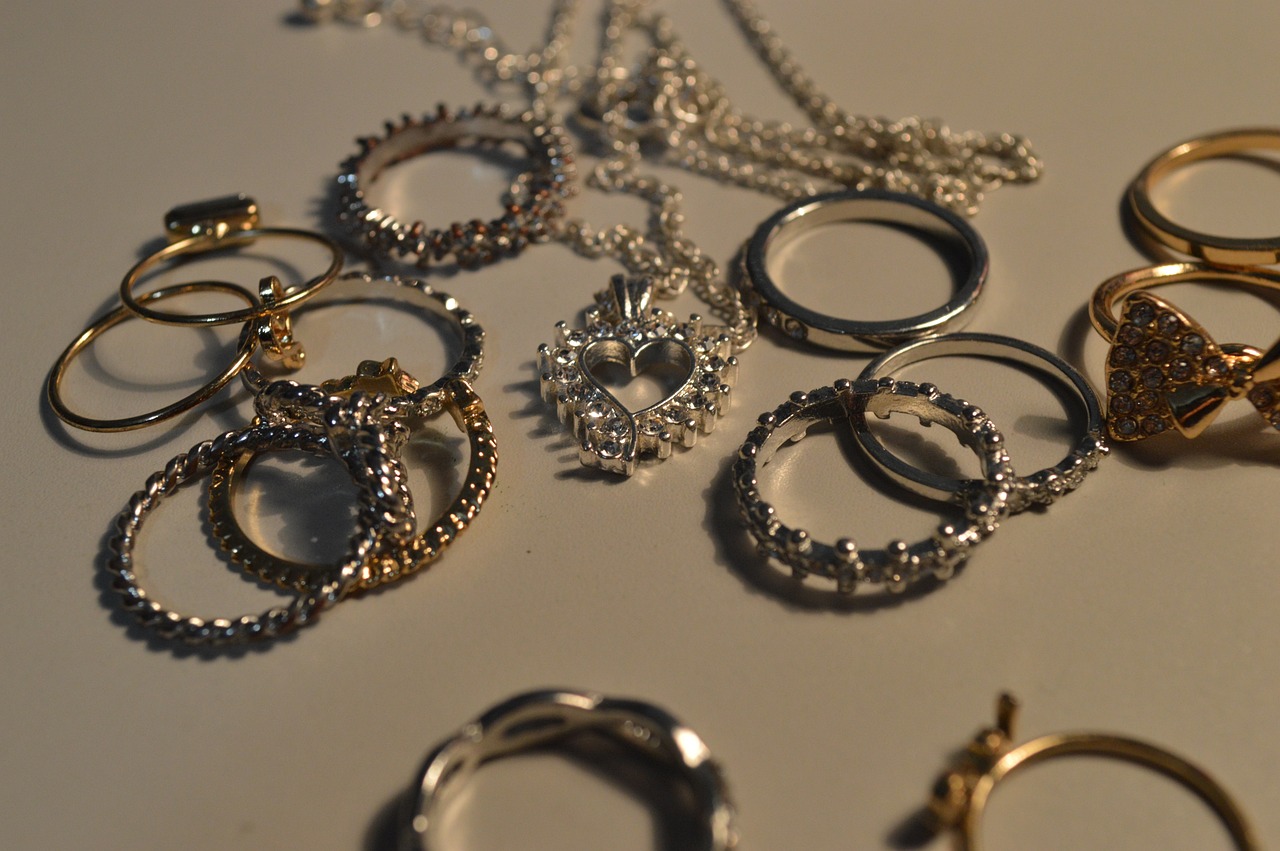
Choosing the Right Gemstones
is a pivotal step in ensuring the quality and beauty of your jewelry. The right gemstone not only enhances the aesthetic appeal of a piece but also carries significant meanings and associations. This section delves into popular gemstones, their unique attributes, and essential factors to consider when selecting them.
When it comes to gemstones, there are numerous options available, each with its own characteristics and symbolism. Below are some of the most popular gemstones:
- Diamond: Known for its unmatched brilliance and hardness, diamonds symbolize eternity and are often used in engagement rings.
- Ruby: This vibrant red gemstone is associated with passion and love. It is believed to bring good fortune and protection to its wearer.
- Sapphire: Available in various colors, sapphires are often linked to wisdom and royalty. They are a popular choice for both rings and necklaces.
- Emerald: This green gemstone is a symbol of rebirth and growth. It is highly regarded for its beauty and rarity.
- Amethyst: Known for its calming properties, amethyst is often associated with tranquility and is believed to promote balance.
When selecting a gemstone, consider the following factors:
- Quality: Look for gemstones with high clarity, color, and cut. These factors significantly influence their overall beauty and value.
- Personal Significance: Choose gemstones that resonate with you personally, whether through their meaning or color.
- Durability: Consider how the gemstone will be used. Some stones are more suitable for daily wear than others due to their hardness.
- Budget: Set a budget before shopping. Gemstones can vary widely in price, so it’s essential to know what you can afford.
In conclusion, selecting the right gemstone is not just about aesthetics; it’s about finding a piece that speaks to you and meets your needs. By understanding the various options and considering important factors, you can make an informed choice that enhances your jewelry collection.
Natural vs. Synthetic Gemstones
Understanding the distinction between natural and synthetic gemstones is crucial for anyone looking to purchase jewelry. This knowledge not only helps in identifying the authenticity of the gemstones but also plays a significant role in determining their value. In this section, we will delve into the key differences between these two types of gemstones, their characteristics, and how to identify them effectively.
Natural gemstones are formed through natural geological processes over millions of years. They are mined from the earth and can vary widely in color, clarity, and size. The beauty and rarity of natural gemstones often contribute to their higher market value. On the other hand, synthetic gemstones are created in laboratories using artificial processes that replicate the conditions under which natural gemstones form. While they can possess similar physical and chemical properties, synthetic gemstones are generally less expensive due to their availability and the controlled environment in which they are produced.
| Aspect | Natural Gemstones | Synthetic Gemstones |
|---|---|---|
| Formation | Formed naturally over time | Created in labs |
| Value | Generally higher | Usually lower |
| Rarity | Varies; often rare | More abundant |
| Appearance | Unique imperfections | Often flawless |
To identify whether a gemstone is natural or synthetic, buyers should look for specific indicators. Professional certification from reputable gemological laboratories can provide assurance regarding the gemstone’s authenticity. Additionally, examining the gemstone under magnification can reveal characteristics such as inclusions or bubbles, which are often present in synthetic stones.
In conclusion, understanding the differences between natural and synthetic gemstones is essential for making informed jewelry purchases. By recognizing their unique properties and how to identify them, buyers can ensure they are investing in genuine pieces that hold true value.
Birthstones and Their Significance
Birthstones are not just beautiful gemstones; they carry profound personal significance for many individuals. Each month of the year is associated with a specific stone, and these stones are believed to possess unique qualities and powers that can influence the wearer’s life. In this section, we will delve into the meanings of each birthstone and how they can affect your jewelry choices.
| Month | Birthstone | Meaning |
|---|---|---|
| January | Garnet | Protection and energy |
| February | Amethyst | Calmness and clarity |
| March | Aquamarine | Serenity and tranquility |
| April | Diamond | Strength and purity |
| May | Emerald | Loyalty and rebirth |
| June | Alexandrite | Change and balance |
| July | Ruby | Passion and protection |
| August | Peridot | Growth and prosperity |
| September | Sapphire | Wisdom and royalty |
| October | Opal | Creativity and inspiration |
| November | Citrine | Joy and abundance |
| December | Turquoise | Healing and protection |
Choosing jewelry that features your birthstone can be a meaningful way to express your identity and values. Whether you opt for a simple pendant or an elaborate ring, incorporating your birthstone into your jewelry collection allows you to carry its significance with you. Additionally, many people believe that wearing their birthstone can enhance its positive qualities, making it a popular choice for gifts and personal adornment.
In summary, understanding the significance of birthstones can greatly influence your jewelry choices. By selecting pieces that resonate with you personally, you not only enhance your style but also embrace the deeper meanings associated with these beautiful stones.

How to Ensure Quality When Buying Online
Ensuring quality when purchasing jewelry online is essential for a satisfying shopping experience. As the online marketplace continues to grow, it becomes increasingly important to know how to navigate it wisely. This section will guide you through the process of evaluating sellers, reading reviews, and understanding return policies.
First and foremost, evaluating sellers is critical. Look for reputable online jewelry stores that have a solid track record. You can start by checking their website for contact information and customer service options. A trustworthy seller will provide clear communication channels, such as a phone number or live chat support. Additionally, consider checking if the seller is a member of any recognized jewelry associations, which can indicate their credibility.
Next, reading reviews is an invaluable step in your purchasing journey. Look for customer feedback on independent review sites, as well as on the seller’s website. Pay attention to the overall rating and read both positive and negative reviews to get a balanced view. Look for comments regarding the quality of the jewelry, customer service experiences, and whether the items matched the descriptions provided. This will give you insights into the seller’s reliability and product quality.
Understanding return policies is another crucial aspect of online jewelry shopping. Before making a purchase, read the seller’s return policy carefully. A good return policy should allow you to return or exchange items if they do not meet your expectations. Be wary of sellers with overly restrictive policies or those that do not offer returns at all, as this could indicate potential issues with product quality.
In summary, ensuring quality when buying jewelry online involves evaluating sellers, reading reviews, and understanding return policies. By taking these steps, you can make informed decisions and enjoy a successful online jewelry shopping experience.
Reading Product Descriptions and Reviews
Reading product descriptions and customer reviews is an essential part of the online jewelry shopping experience. These elements can significantly influence your purchasing decision and help ensure that you receive a quality product.
When examining product descriptions, look for detailed information regarding the materials used, dimensions, and care instructions. A well-written description should provide clarity on the type of metal, gemstone quality, and any special features that the jewelry piece may possess. For example, if you are considering a gold ring, the description should specify the karat of the gold, whether it is solid or plated, and any additional embellishments.
Additionally, images play a crucial role in assessing the jewelry’s appearance. High-quality images from multiple angles can give you a better understanding of the product’s design and craftsmanship. Pay attention to the lighting and background of these images, as they can affect how the jewelry looks.
Customer reviews are another invaluable resource. They offer insights into the experiences of previous buyers, helping you gauge the quality and reliability of the item. Look for reviews that mention specific details such as the jewelry’s durability, comfort, and how it holds up over time. If multiple customers express similar concerns, it may be a red flag.
- Check for verified purchases: Reviews from verified buyers tend to be more trustworthy.
- Look for patterns: Consistent feedback about a particular issue can indicate a problem.
- Consider the overall rating: A high rating with numerous reviews can suggest a reliable product.
In conclusion, taking the time to read product descriptions and customer reviews can greatly enhance your online jewelry shopping experience. By being thorough and attentive, you can make informed decisions that lead to satisfying purchases.
Certifications and Authenticity
Certifications play a crucial role in affirming the quality and authenticity of jewelry. When purchasing jewelry online, understanding the types of certifications available can significantly enhance your shopping experience. This section delves into the various certifications, their importance, and how they can safeguard your investment.
First and foremost, certifications are issued by reputable gemological laboratories and serve as a guarantee that the jewelry has been evaluated by professionals. These certifications can cover a range of factors including the quality of materials, gemstone authenticity, and overall craftsmanship.
- Gemstone Certifications: For gemstones, certifications typically include details about the stone’s cut, clarity, color, and carat weight. One of the most recognized certifications is from the Gemological Institute of America (GIA), which is known for its rigorous grading standards.
- Metal Certifications: Certifications for metals, such as gold and silver, often indicate purity levels. For example, 925 sterling silver signifies that the metal is 92.5% pure silver, while the remainder consists of other metals for added durability.
- Ethical Certifications: In recent years, there has been a growing emphasis on ethical sourcing. Certifications like Fair Trade or Conflict-Free diamonds ensure that the materials used in jewelry are sourced responsibly.
Why are these certifications important? They not only provide peace of mind but also help in maintaining the resale value of your jewelry. When you have certified pieces, you can be confident in their quality and authenticity, making them a worthwhile investment.
In conclusion, understanding jewelry certifications is essential for online shoppers. By ensuring that your purchases come with appropriate certifications, you can protect yourself from counterfeit products and make informed decisions that enhance your jewelry collection.

Understanding Pricing and Budgeting
When it comes to purchasing jewelry, setting a budget is not just advisable; it is essential. A well-defined budget helps you make informed decisions and manage your expectations effectively. This section will guide you through the process of determining fair pricing and how to align your choices with your financial plan.
First and foremost, it is crucial to understand the market value of the jewelry you are interested in. Researching different styles, materials, and brands can provide a baseline for what to expect in terms of pricing. Take the time to explore various online platforms and local jewelers to gather insights.
One effective method to determine fair pricing is to create a comparison table. This table can include different retailers, the jewelry pieces you are considering, and their prices. By visualizing the data, you can easily spot discrepancies and identify the best deals. Here’s a simple example:
| Retailer | Item | Price |
|---|---|---|
| Store A | Gold Necklace | $300 |
| Store B | Gold Necklace | $280 |
| Store C | Gold Necklace | $320 |
In addition to base prices, it’s important to be aware of hidden costs that may arise during your purchase. These can include shipping fees, taxes, or even costs related to returns. Always read the fine print and factor these potential expenses into your budget.
Lastly, managing your expectations is key. Jewelry is often a significant investment, and it’s important to remember that quality often comes at a price. By staying within your budget and being realistic about what you can afford, you can enjoy your purchase without the stress of overspending.
In conclusion, setting a budget for jewelry purchases is a vital step in ensuring a satisfying shopping experience. By understanding market prices, comparing options, and being mindful of hidden costs, you can make informed decisions that align with your financial goals.
Comparing Prices Across Different Platforms
Comparing prices is an essential tactic for savvy online shoppers, especially in the jewelry market, where prices can vary significantly between different platforms. By employing effective strategies for price comparison, you can ensure that you secure the best possible deal without compromising on quality.
To begin with, research is key. Utilize various online tools and websites that specialize in price comparisons. These platforms aggregate prices from multiple retailers, allowing you to see at a glance where the best deals are. Some popular options include:
- PriceGrabber
- Google Shopping
- ShopSavvy
Additionally, it’s important to consider the total cost of the jewelry, not just the listed price. This includes shipping fees, taxes, and any potential import duties. Some retailers may offer a lower initial price but have higher shipping costs, which could negate any savings. Always calculate the final price before making a decision.
Another effective method is to sign up for newsletters from your favorite jewelry stores. Many retailers offer exclusive discounts and promotions to their subscribers, which can lead to significant savings. Furthermore, keeping an eye on seasonal sales events, such as Black Friday or holiday sales, can also yield great deals.
Lastly, don’t hesitate to read customer reviews and ratings. They can provide insights into the quality of the jewelry and the reliability of the seller. A higher price might sometimes reflect better craftsmanship and service, so weigh your options carefully.
In conclusion, by utilizing various tools and strategies for price comparison, you can enhance your online shopping experience and ensure you are making informed purchasing decisions. Always remember to factor in all costs and consider the overall value of your purchase.
Hidden Costs to Watch Out For
When purchasing jewelry online, it is crucial to be aware of potential hidden costs that can significantly impact your overall spending. These additional fees are often overlooked but can lead to unexpected expenses. Below, we outline some common hidden costs associated with online jewelry shopping.
- Shipping Fees: Many online retailers charge a fee for shipping, which can vary based on the delivery speed and destination. It is essential to check whether the retailer offers free shipping on orders above a certain amount.
- Sales Tax: Depending on your location and the retailer’s policies, you may be required to pay sales tax on your purchase. This can add a substantial amount to the final price, so be sure to calculate this into your budget.
- Import Duties: If you are purchasing jewelry from an international seller, you might incur import duties or customs fees. These charges can be significant and are often not included in the initial price.
- Return Shipping Costs: In the event that you need to return the jewelry, some retailers may not cover the cost of return shipping. This can add an extra expense that you should factor into your decision-making process.
- Insurance Fees: If you choose to insure your jewelry during shipping, this may come with an additional cost. Consider whether this is necessary based on the value of your purchase.
By understanding these potential hidden costs, you can make more informed decisions and avoid overspending when buying jewelry online. Always read the fine print and ask questions if you are unsure about any fees before completing your purchase.
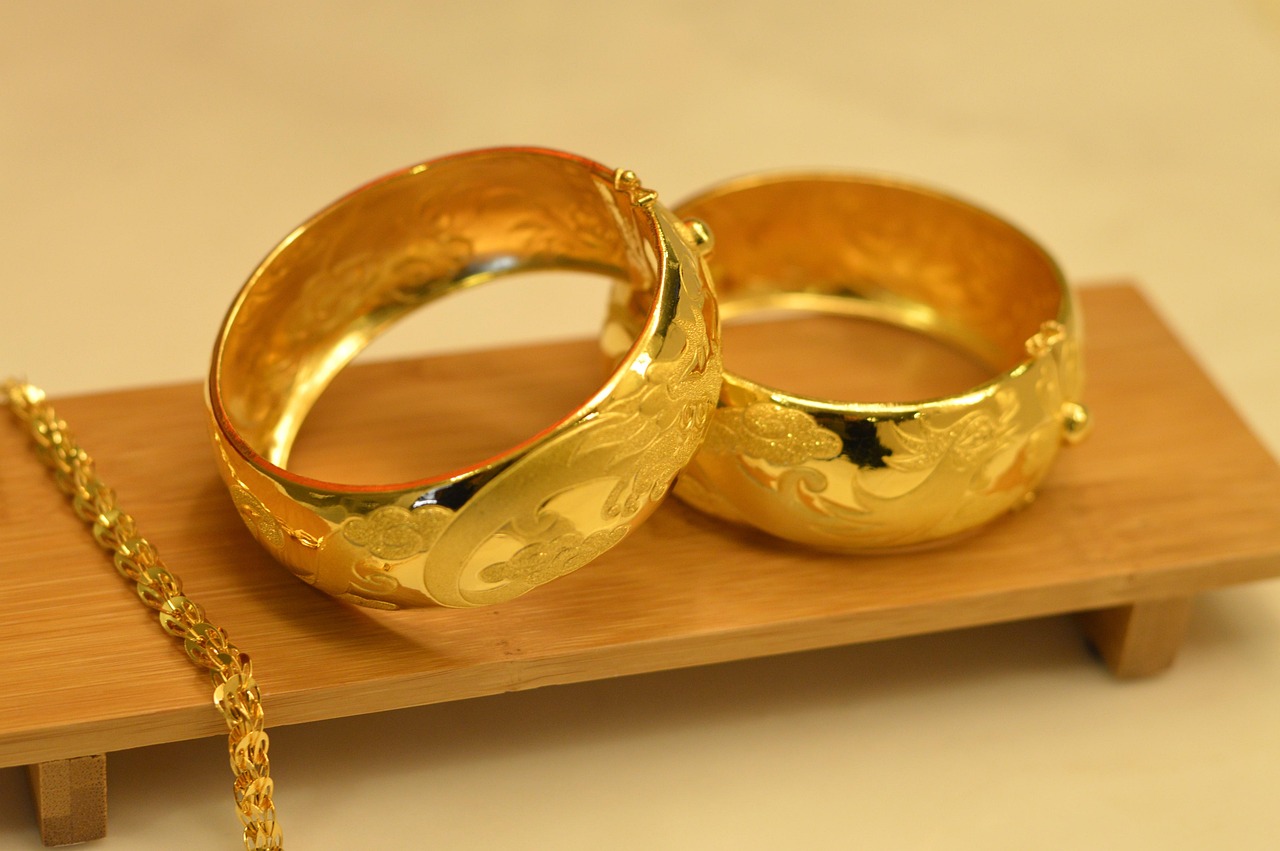
Finalizing Your Purchase: Safety Tips
When it comes to buying jewelry online, ensuring safety should be your top priority. The convenience of online shopping can sometimes overshadow the risks involved, but with the right precautions, you can enjoy a secure shopping experience. Here are some essential tips to consider:
- Choose Reputable Websites: Always shop from well-known and established jewelry websites. Look for customer reviews and ratings to gauge their reliability.
- Secure Payment Methods: Utilize secure payment options such as credit cards or trusted payment platforms like PayPal. These methods often offer buyer protection in case of disputes.
- Check for SSL Encryption: Ensure the website uses SSL encryption, which is indicated by a padlock icon in the address bar. This helps protect your personal information during transactions.
- Read Return Policies: Before making a purchase, familiarize yourself with the seller’s return and exchange policies. This is crucial in case the jewelry does not meet your expectations.
- Verify Seller Reputation: Research the seller’s background. Look for certifications or affiliations with recognized jewelry organizations to confirm their legitimacy.
- Be Cautious of Deals that Seem Too Good to Be True: If a deal appears excessively cheap, it may be a red flag. Always compare prices and avoid impulsive purchases.
- Protect Your Personal Information: Never share sensitive information beyond what is necessary for the transaction. Avoid giving out extra details that could compromise your safety.
By following these guidelines, you can significantly reduce the risks associated with online jewelry shopping. Always stay vigilant and prioritize your security to ensure a satisfying and safe purchasing experience.
Using Secure Payment Methods
In the realm of online shopping, particularly when purchasing jewelry, choosing secure payment methods is not just a recommendation but a necessity. The digital marketplace, while offering unparalleled convenience and variety, also presents various risks that can compromise your financial security.
Understanding the safest payment options available is crucial. Here are some of the most secure methods:
- Credit Cards: Credit cards often provide robust fraud protection. Many credit card companies offer zero liability policies, meaning you won’t be held responsible for unauthorized charges.
- PayPal: This popular payment platform acts as a buffer between your financial information and the seller. With PayPal, you can make purchases without directly sharing your credit card or bank details.
- Cryptocurrency: For those familiar with digital currencies, cryptocurrencies like Bitcoin can offer anonymity and security. However, it’s essential to understand the volatility and risks associated with them.
- Secure Payment Gateways: Look for websites that use secure payment gateways such as Stripe or Square. These platforms encrypt your payment information, adding an extra layer of protection.
Why do these payment methods matter for your security? The primary reason is protection against fraud. By using secure payment options, you minimize the risk of your financial information being intercepted or misused. Furthermore, reputable payment methods often come with buyer protection policies that allow you to dispute charges if something goes wrong with your purchase.
In conclusion, when shopping online for jewelry, prioritizing secure payment methods is essential. Not only does it safeguard your personal and financial information, but it also enhances your overall shopping experience by providing peace of mind. Always remember to verify the website’s security measures before making a purchase, ensuring that your online shopping remains enjoyable and safe.
Verifying Seller Reputation
When it comes to purchasing jewelry online, one of the most crucial steps is verifying the seller’s reputation. This process can significantly reduce the risk of falling victim to scams and ensure that you are making a safe investment. Below are some effective strategies to research sellers before finalizing your purchase.
- Check Online Reviews: Look for customer feedback on various platforms. Websites like Trustpilot and Google Reviews can provide insights into other buyers’ experiences. Pay attention to both positive and negative reviews to get a balanced view.
- Visit the Seller’s Website: A professional and well-maintained website often indicates a legitimate business. Look for clear contact information, a privacy policy, and detailed product descriptions.
- Look for Certifications: Reputable sellers often display certifications from recognized organizations. These can include gemological certifications or business accreditations that add credibility to their offerings.
- Engage with Customer Service: Reach out to the seller with questions about their products or policies. A prompt and helpful response can be a good indicator of their reliability.
- Research Social Media Presence: Check the seller’s social media accounts to see how they interact with customers. A strong, positive online presence can reflect their commitment to customer satisfaction.
- Use the Better Business Bureau (BBB): If you are in the U.S., the BBB is a valuable resource for checking a business’s reputation. Look for any complaints filed against the seller and how they were resolved.
By taking these steps, you can confidently assess a seller’s reputation and make informed decisions when buying jewelry online. Remember, a little research can go a long way in protecting yourself from potential fraud.
Frequently Asked Questions
- What are the benefits of buying jewelry online?
Buying jewelry online offers a plethora of advantages, including the convenience of shopping from home, access to a wider selection of items, and often better prices compared to physical stores. You can explore various styles and materials without the pressure of salespeople, making it a stress-free experience!
- How can I ensure the quality of jewelry purchased online?
To ensure quality, always read product descriptions thoroughly and pay close attention to customer reviews. Look for certifications that verify the authenticity of the materials used. Additionally, researching the seller’s reputation can provide peace of mind before making a purchase.
- What is the difference between natural and synthetic gemstones?
Natural gemstones are formed through natural processes over time, while synthetic gemstones are created in labs to mimic their natural counterparts. Understanding this difference is crucial, as it affects the value and authenticity of the jewelry. Always inquire about the origin of the gemstones before buying!
- Are there hidden costs when buying jewelry online?
Yes, there can be hidden costs such as shipping fees, taxes, or customs duties that may apply depending on your location. It’s essential to factor these potential costs into your budget to avoid any surprises at checkout!
- What secure payment methods should I use?
When shopping online, opt for secure payment methods such as credit cards or trusted payment platforms like PayPal. These methods often provide buyer protection, ensuring that your personal information stays safe during transactions.

